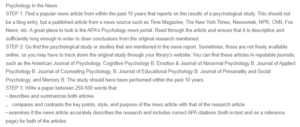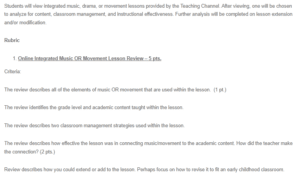Music Integration Lesson Review
Music or Movement Elements
David Bak-Neilsen, the teacher, incorporated different elements of movement during the class activities. He begins the lesson by reading a story of the cycle of growth of frogs. The teacher requests the students to stand up and demonstrate how the tadpoles wriggle out of their eggs. The students were then put in groups to show how the animals given in the picture card moved among themselves. The teacher then assembles all the students for them to share how they demonstrated how specific animals move with their colleagues. Hire our assignment writing services in case your assignment is devastating you.
Social Media and Adolescent Mental Health
Social media, which is a form of electronic communication, has swiftly evolved in the recent century. Undeniably, social media presents numerous benefits for people regardless of their age and location, as it is through social media websites like Facebook, Instagram, YouTube, etc, that people create content, share messages and information, network, and advertise their products and services. However, according to (the Office of the Assistant Secretary for Health (OASH), 2023), social media can have detrimental effects on people’s mental health, especially teens. Hence the question, “Is social media bad for teens?” This paper offers a comparative summary of two publications related to the impact of social media on adolescent mental health. The first article, a news piece by Claire Cain Miller, titled “Everyone Says Social Media Is Bad for Teens. Proving It Is Another Thing,” explores the potential consequences of social media use on teenagers’ well-being, while the second article, a research study conducted by Riehm et al., investigates the associations between time spent on social media and internalizing and externalizing problems among U.S. adolescents.
The news article by Claire Miller primarily focuses on the growing concern surrounding the effect of social media on teenagers’ mental health (Miller, 2023). It discusses key points, such as the ubiquity of social media among adolescents, the potential negative influences, and concerns related to issues like cyberbullying, unrealistic self-presentations, and the prevalence of depressive and anxiety symptoms. The primary purpose of this news article is to inform the general public about these concerns and encourage a conversation about responsible social media use.
On the other hand, the research study by Riehm et al. takes a more scientific and data-driven approach. It delves into the issue by examining a large sample of U.S. adolescents to determine if time spent on social media is prospectively linked to internalizing and externalizing problems. The research is meticulous, analyzing data from 6595 participants and considering various factors such as demographics, prior mental health problems, and substance use (Riehm et al., 2019).
Subsequently, the news article, which describes the research, is focused on raising awareness and prompting discussions regarding the potential impact of social media on teen mental health. The research article, on the other hand, seeks to establish a connection between social media use and specific mental health problems. Consistently, the news article employs a more accessible and reader-friendly style, intending to inform and spark conversations among a general audience. In contrast, the research article adopts a formal, data-driven approach aimed at providing scientific evidence. Lastly, the news article accurately describes the research, summarizing the key findings about the association between social media use and internalizing problems among adolescents. However, it simplifies complex statistical data for a broader audience.
In summation, while both the news article and research study address the potential relationship between social media and adolescent mental health, they differ in focus, style, and purpose. The news article serves as a valuable introduction for the general public to the research findings, while the research article provides a comprehensive analysis of the topic. Together, they offer insight into the pressing issue of social media’s influence on teen mental health, the need for responsible usage, and further research in this area.
References
Miller, C. C. (2023, June 17). Everyone says social media is bad for teens. Proving it is another thing. The New York Times. https://www.nytimes.com/2023/06/17/upshot/social-media-teen-mental-health.html
Riehm, K. E., Feder, K. A., Tormohlen, K. N., Crum, R. M., Young, A. S., Green, K. M., Pacek, L. R., La Flair, L. N., & Mojtabai, R. (2019). Associations between time spent using social media and internalizing and externalizing problems among U.S. youth. JAMA Psychiatry, 76(12), 1266. https://doi.org/10.1001/jamapsychiatry.2019.2325
Office of the Assistant Secretary for Health (OASH). (2023, May 23). Surgeon General issues new advisory about effects social media use has on Youth Mental Health. HHS.gov. https://www.hhs.gov/about/news/2023/05/23/surgeon-general-issues-new-advisory-about-effects-social-media-use-has-youth-mental-health.html
ORDER A PLAGIARISM-FREE PAPER HERE
We’ll write everything from scratch
Question 

Social Media and Adolescent Mental Health
Psychology in the News
STEP 1: Find a popular news article from within the past 10 years that reports on the results of a psychological study. This should not be a blog entry, but a published article from a news source such as Time Magazine, The New York Times, Newsweek, NPR, CNN, Fox News, etc. A great place to look is the APA’s Psychology news portal. Read through the article and ensure that it is descriptive and sufficiently long enough in order to draw conclusions from the original research mentioned.
STEP 2: Go find the psychological study or studies that are mentioned in the news report. Sometimes, those are not freely available online, so you may have to track down the original study through your library’s website. You can find these articles in reputable journals, such as the American Journal of Psychology. Cognitive Psychology B. Emotion & Journal of Abnormal Psychology B. Journal of Applied Psychology B. Journal of Counseling Psychology, B. Journal of Educational Psychology B. Journal of Personality and Social Psychology, and Memory B. The study should have been performed within the past 10 years.
STEP 3: Write a paper between 250-500 words that:
• describes and summarizes both articles
。 compares and contrasts the key points, style, and purpose of the news article with that of the research article
• examines if the news article accurately describes the research and includes correct APA citations (both in-text and on a reference page) for both of the articles Students are seen crawling like a snake, among other movements. The teacher asks questions throughout the lesson, and students raise their hands to respond to them as he appoints a student at a time (Teaching Channel, 2020).
Grade Level and Academic Content
David Bak-Neilsen is teaching a locomotion lesson to grade 3 students. He integrates different academic content into the learning activities. The class is structured on a science subject, where the students learn how different animals move, including hopping, crawling, flying, jumping, running, and wiggling. David Bak-Neilsen also incorporated language art into the lesson activities. The students write about different characteristics of the animals. Also, the students draw different animals, designing the frame and background of the paper based on the area where the animal resides. The students drew twenty pictures of different animals, integrating mathematical academic content into the lesson. The teacher also promotes visual arts by illustrating how the students should present their art.
Classroom Management Strategies
David Bak-Neilsen incorporated different classroom management strategies, which enhanced students’ engagement and successful learning process. The teacher promoted positive reinforcement by acknowledging the students’ good job. He occasionally appreciated the students for the good art in the wall pictures. Another management strategy during the lesson is fostering strong relationships with the students. The teacher interacted with the students in a friendly manner. He allowed all students to voice their ideas, as seen when they reevaluated the most attractive art. The teacher further engages personally with students as he helps the students review the knowledge acquired in learned concepts.
Effectiveness of the Lesson
The teacher effectively connected the movement with different content. He assembles the students at the beginning of the lesson as he reads to them the frog’s life cycle. He encourages class participation for all students by asking students questions related to the learning content. The teacher also encouraged teamwork by grouping the students in small groups to share ideas before discussing the concepts with the whole class. The classroom arrangement fosters a conducive learning environment for the art activities; the students would freely move around the class, demonstrating how different animals move. David Bak-Neilsen also used graphic organizers to help students connect information and understand the starting point for better understanding and information retention. The class activities incorporated multisensory teaching strategies, which promoted an effective learning atmosphere.
Addition to the Lesson
David Bak-Neilsen promoted a friendly and effective learning environment for all students through group activities, practical exercises, and reinforcing knowledge to keep all students at the same learning level. Virtual tools, such as picture cards and projecting information, are essential to accommodate early childhood students. However, the teacher does not identify ways of assessing students’ knowledge. The language arts would be used as an assessment tool to evaluate the knowledge gained by the students. The teacher would determine how successfully each student drew each animal and aligned it with a background color that connected to the animals’ habitat. Notably, Brookhart & Nitko (2019) note that assessment motivates students’ performance and informs a teacher of areas to reinforce and improve student achievement.
References
Brookhart, S. M., & Nitko, A. J. (2019). Educational assessment of students. Upper Saddle River, NJ: Pearson.
Teaching Channel. (2020). Animal patterns: Integrating science, math & art [Video]. https://library.teachingchannel.org/landing-page?mediaid=8iIj3cRp&playerid=Cogatb0c
ORDER A PLAGIARISM-FREE PAPER HERE
We’ll write everything from scratch
Question 

Music Integration Lesson Review
Students will view integrated music, drama, or movement lessons provided by the Teaching Channel. After viewing, one will be chosen to analyze for content, classroom management, and instructional effectiveness. Further analysis will be completed on lesson extension and/or modification.
Rubric
- Online Integrated Music OR Movement Lesson Review – 5 pts.
Criteria:
The review describes all of the elements of music OR movement that are used within the lesson.
The review identifies the grade level and academic content taught within the lesson.
The review describes two classroom management strategies used within the lesson.
The review describes how effective the lesson was in connecting music/movement to the academic content. How did the teacher make the connection?
Review describes how you could extend or add to the lesson. Perhaps focus on how to revise it to fit an early childhood classroom.
